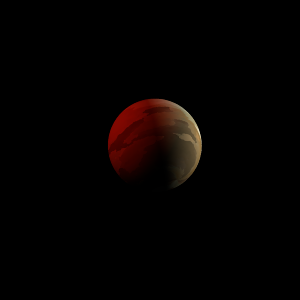|
|
Space Astro
|
Info for exoplanet "Ryuba-se"
| Scientific (actual) data |
|---|
| Name | Kepler-122 b |
| Planet status | Confirmed |
| Radius | 0.209 |
| Orbital period | 5.76619 |
| Semi major axis | 0.064 |
| Discovered | 2014 |
| Updated | 2021-02-05 |
| Tconj | 2454970 |
| Impact parameter | 0 |
| Publication | Announced on a website |
| Detection type | Primary Transit |
| Alternate names | 2MASS J19242685+3956567 b, K00232.02, KIC 4833421 b, KOI-232 b, KOI-232.02, WISE J192426.85+395656.6 b |
| Star name | Kepler-122 |
| Right ascension | 291.11° |
| Declination | 39.95° |
| Mag j | 13.173 |
| Mag h | 12.887 |
| Mag k | 12.826 |
| Star distance | 1058.58 |
| Star metallicity | -0.202 |
| Star mass | 0.99 |
| Star radius | 1.22 |
| Star temperature | 6050 |
| Star alternate names | 2MASS J19242685+3956567, KIC 4833421, KOI-232, WISE J192426.85+395656.6 |
| Wikipedia article | Kepler-122 b |
Back
| |
| Fictional info (?) |
|---|
| Suggested name | Ryuba-se |
| Planet type | Hot planet |
| The two polar ice caps appear to be made largely of water.
The largest moon is populated by friendly but shy primitive bacteria known as "Biho". They survive only while hunting a substance called "Ryuchi-yu". They are somewhat related to the Juyose-pi and have 2 tentacles and vary in size from 80 to 160 meters. Biho can survive temperatures from -40 to 30°C and sometimes ultra violet light. |
| Estimated population | 700000000 |
| Atmosphere | Methane | 63% |
| Oxygen | 33% |
| Carbon dioxide | 1.9% |
| Water | 1.4% |
| Atmospheric pressure | 27 bar |
 |
| Moon | Gimihe Bowo | Large irregular ice moon |
| Yotokyu Gekapya | Huge round gaseous moon |
| Bichi-bi | Small irregular ice comet |
| Google search for Ryuba-se |
|
Website by Joachim Michaelis
|
|
|
|